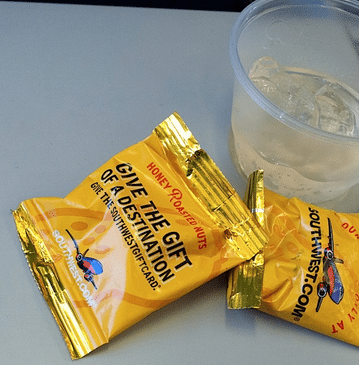The Long Life and Quick Demise of the Airline Peanut

Skift Take
When it comes to serving food on board, airlines can't seem to win: whatever they serve is criticized for its quality, but if they cut back, they hear about that, too. The life of the airline peanut - after decades, barely hanging on to its role as the prototypical on-board snack - is representative of airline food's career, both triumphs and struggles.
[gallery ids="95075,94991,94988,94941,94982,94981"]
When peanuts first became a well-known airline staple, it was all because Southwest Airlines was trying to spin a negative.
To offer the cheapest flights on the market, the budget carrier had eliminated on-board meals. But it wanted to make sure consumers saw the connection between its minimal service and low fares. So Southwest marketed itself as the “peanut airline” – meaning you fly for ‘peanuts,’ and peanuts are what you get.
“It was all about marketing,” said Bob Van der Linden, chair of the aeronautics division at the Smithsonian National Air and Space Museum. Other airlines served peanuts before and have since, Van der Linden said, but “Southwest was the first to serve only peanuts, and did so proudly, to show how cost efficient it was.
With little variation, both Southwest and its peers continued to serve free peanuts and other snacks for the next three decades, even as much else came and went.
That changed in the post-9/11 world of air travel’s free-fall. Where once free snacks had been a staple of even the cheapest carrier, airlines started to see them as an underappreciated perk not wor
